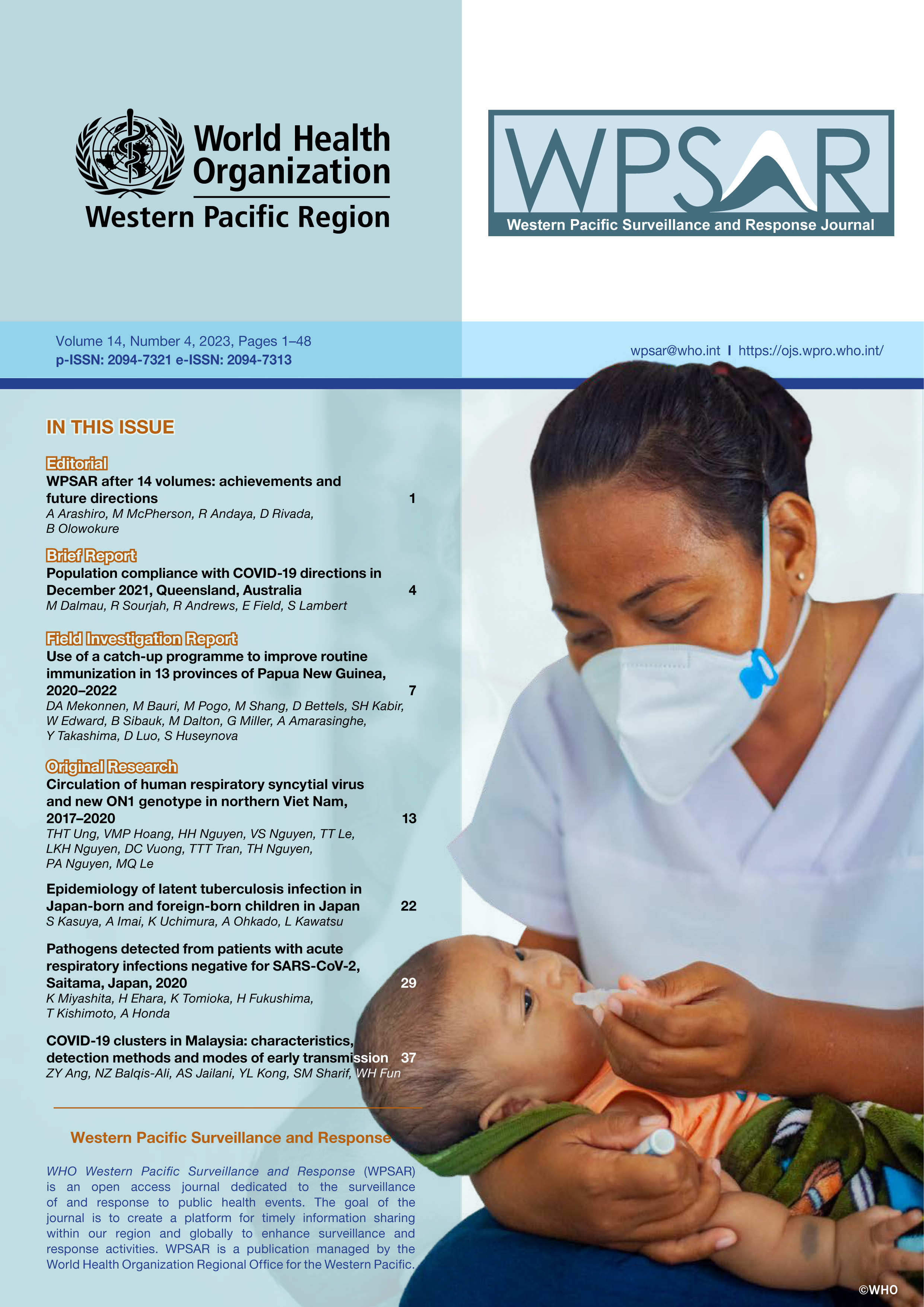Use of a catch-up programme to improve routine immunization in 13 provinces of Papua New Guinea, 2020–2022
DOI:
https://doi.org/10.5365/wpsar.2023.14.4.1055Keywords:
immunization programs, vaccination coverage, pentavalent vaccine, measles-mumps-rubella vaccine, BCG vaccine, poliovirus vaccines, Papua New GuineaAbstract
Objective: Routine immunization coverage in Papua New Guinea has decreased in the past 5 years. This persistently low routine immunization coverage has resulted in low population immunity and frequent outbreaks of vaccine-preventable disease across the country. We describe the use of a catch-up programme to improve routine immunization during the coronavirus disease pandemic in Papua New Guinea during 2020–2022.
Methods: In June 2020, 13 provinces of Papua New Guinea were selected to undergo a vaccination catch-up programme, with technical support from the World Health Organization (WHO) and the United Nations Children’s Fund. Twelve provinces received financial and logistic support through the Accelerated Immunization and Health Systems Strengthening programme, and one received support from WHO. All stakeholders were involved in planning and implementing the catch-up programme.
Results: Between July 2020 and June 2022, about 340 health facilities conducted catch-up activities. The highest number of children aged under 1 year were vaccinated in 2022 (n = 33 652 for third dose of pentavalent vaccine). The national coverage of routine immunization (including the catch-up vaccinations) increased between 2019 and 2020 – by 5% for the third dose of pentavalent vaccine, 11% for the measles-rubella vaccine and 16% for the inactivated poliovirus vaccine. The coverage declined slightly in 2021 before increasing again in 2022.
Discussion: The catch-up programme was an instrumental tool to improve routine immunization coverage between 2020 and 2022 and during the pandemic in Papua New Guinea. With appropriate technical and logistic support, including financial and human resources, catch-up programmes can strengthen routine immunization coverage across the country.

